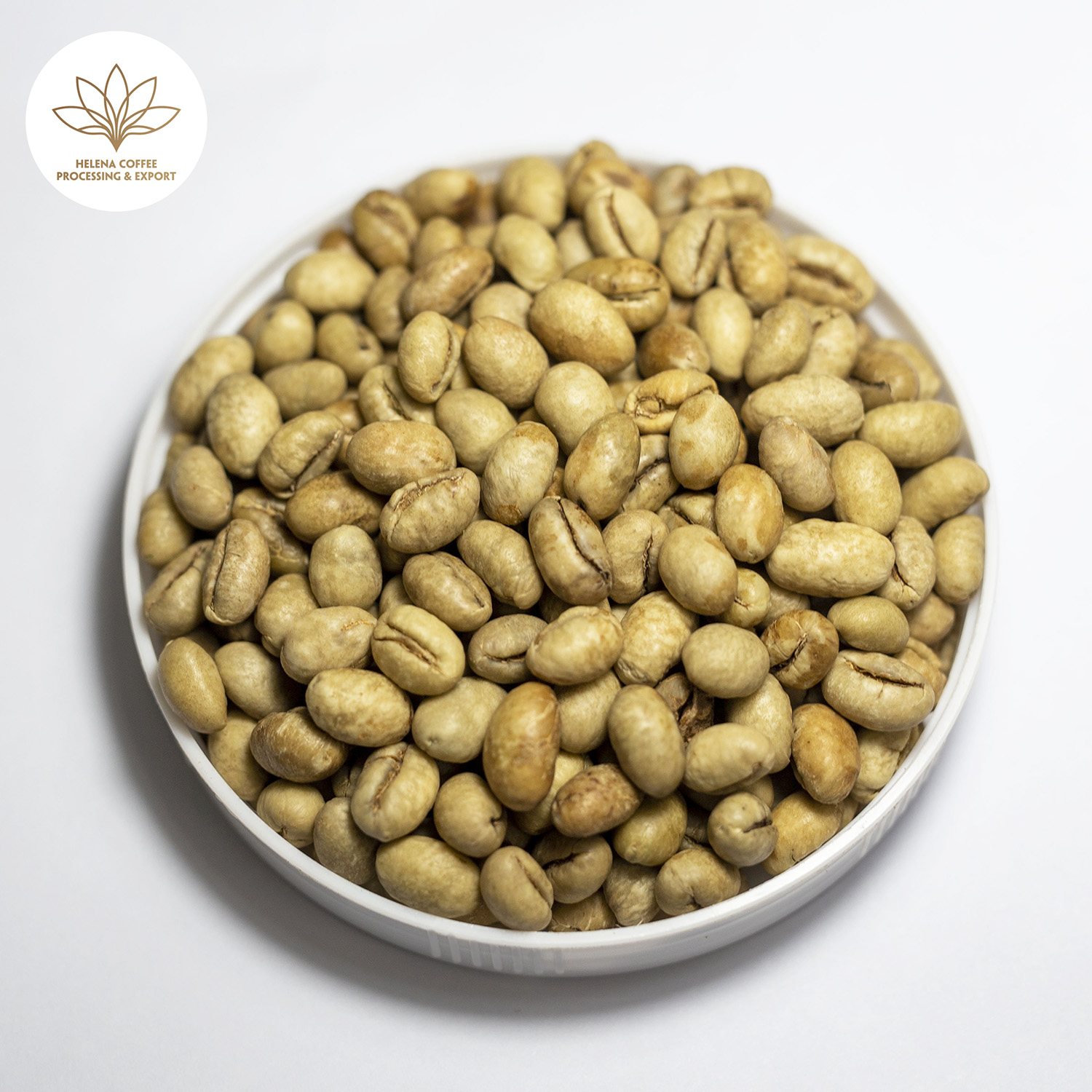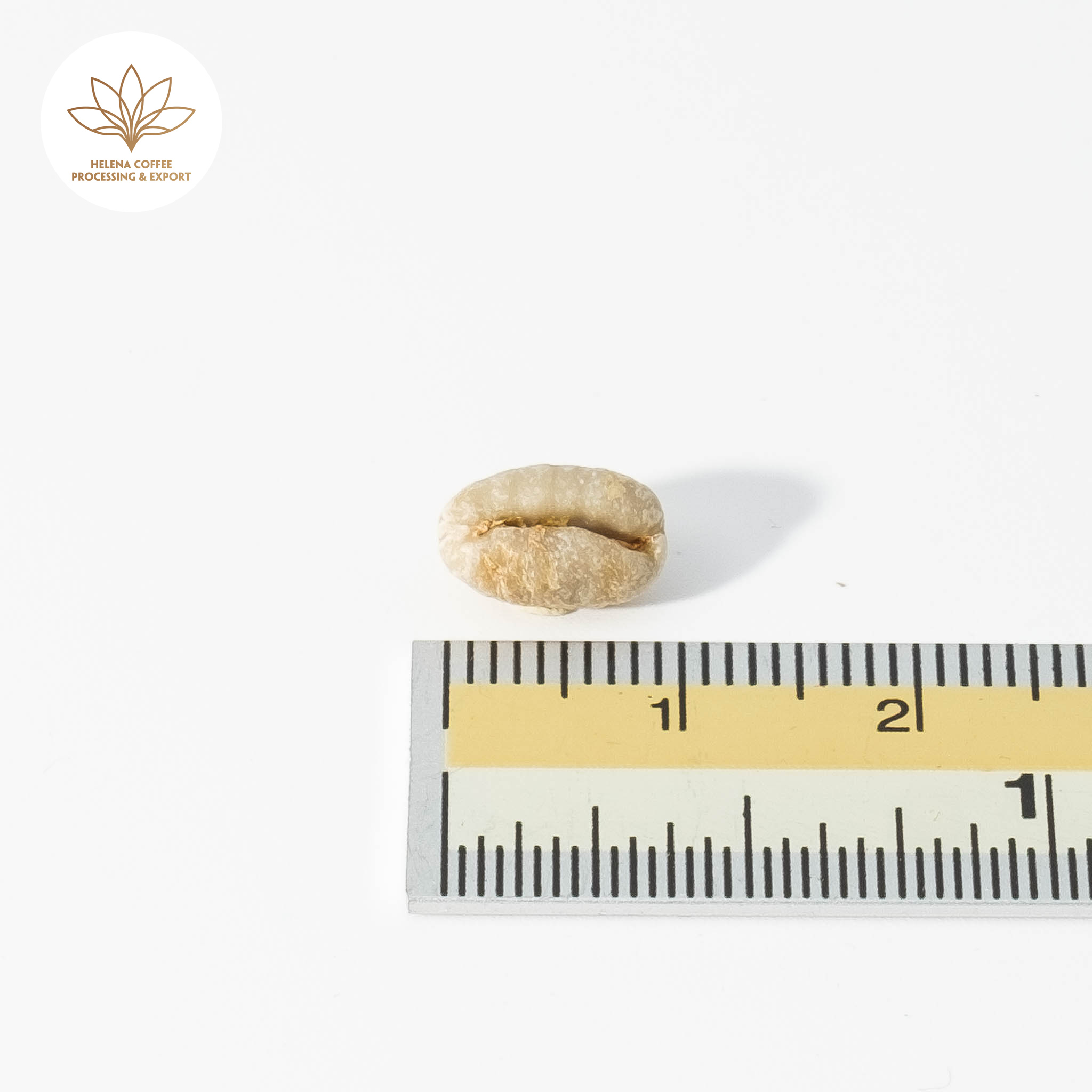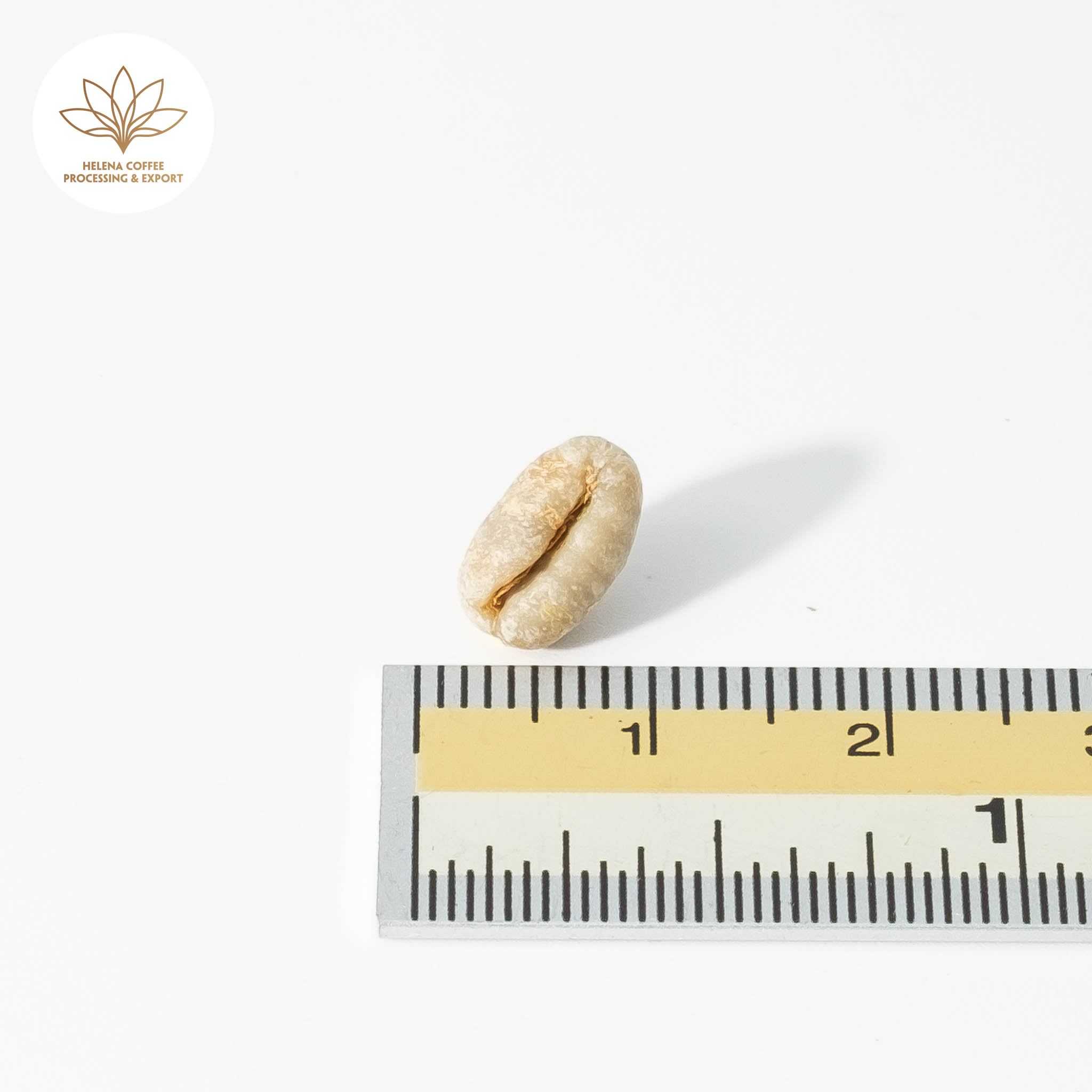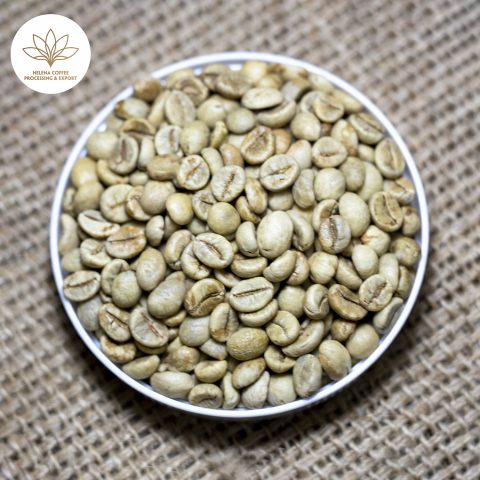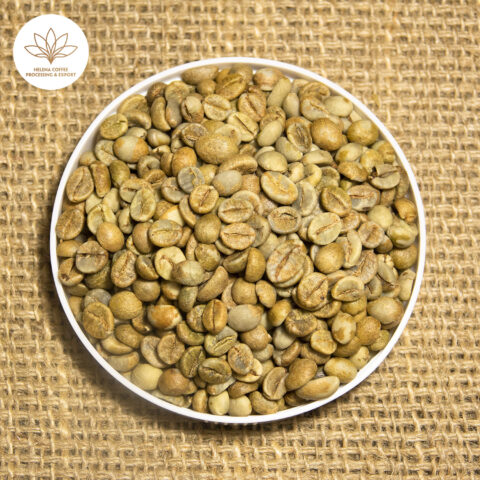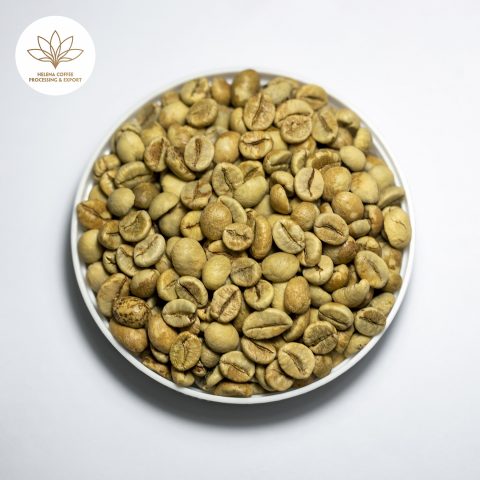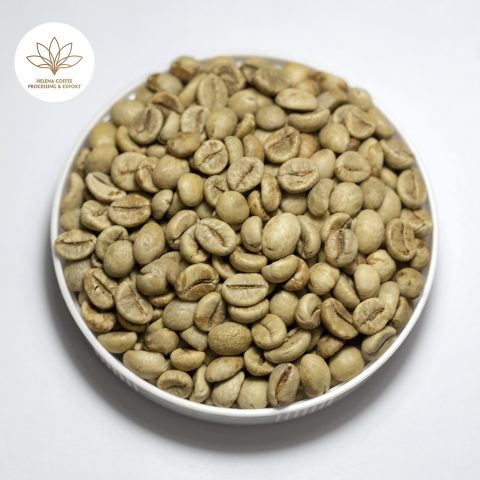Vietnam Peaberry Coffee beans Robusta Culi (S18)
- Home
- Products
- Vietnamese Robusta Green Coffee Beans
- Vietnam Peaberry Coffee beans Robusta Culi (S18)
Vietnam Peaberry Coffee beans Robusta Culi (S18)
$4.00 $3.75
- Region: Daklak
- Elevation: 800m
- Processing: Dry processing
- Moisture: 12.5%
- Foreign Matter: 0.5%
- Black and Broken: 0.5%
- Rate on Sieve: 90%
- Capacity: 500 tons/year
- Price per kilogram: $/kg
- Flavor notes: Bold, earthy, and robust
- Features: Peaberry beans are a natural mutation where a single, rounded bean develops inside the coffee cherry instead of the usual two flat-sided beans. This unique characteristic often results in a more concentrated flavor profile. In the case of Vietnamese Peaberry Robusta beans, you can expect a strong and full-bodied coffee with a pronounced bitterness, lower acidity, and hints of dark chocolate, nuts, or woody undertones. Peaberry beans may also exhibit a slightly smoother and more nuanced taste compared to regular Robusta beans due to their concentrated nature.



Coffee Beans Product Information
Vietnam Peaberry Coffee beans (Culi Robusta green coffee) is a mutant coffee line, of course, it has a different taste from normal Robusta coffee beans, these mutant beans have their own advantages, better aroma, favoring the smell of ripe fruits and herbs. medicinal, malt aroma mixed very lightly and delicately with the smell of burnt chocolate bread, so the aroma is quite attractive.
A coffee berry usually has two kernels, but in some cases, there is only one – these beans are larger and rounder than regular beans and are called Peaberry (or Culi coffee in Vietnam).
The taste of Culi Robusta is balanced and mild, with its own characteristics, delicious, rich, and very attractive compared to the taste of other Robusta lines. What a whole kingdom of rich flavors.
1. Peaberry Coffee beans Robusta – Worthy of the strongest flavor coffee
Coffee beans Culi Robusta in English is peaberry and in Spanish is Caracolillo, which is a mutant form, instead of the usual coffee berries (both Robusta and Arabica) for two flat seeds, the inside of the pods of the coffee fruit. on the mutant plant only developed a single round seed.
In Vietnam, this mutant Robusta coffee fruit is often called Culi Robusta coffee. Round Peaberry Robusta coffee bean, after processing, the coffee bean will be selected, separated from the normal flat coffee beans, and sold as a separate coffee line, the price is usually a bit higher than more. coffee price of the respective coffee category.
Only 1% to 9% of most coffee kinds often contain peaberry seeds, which are frequently isolated and sold at a premium price due to their superior flavor and fragrance qualities when compared to regular beans of the same variety. Some of the most well-known Peaberry hats originate in Kenya, Tanzania, and Hawaii.
Because they might weigh more, the Peaberry beans are segregated from the standard flat beans before roasting to guarantee uniformity.
Because differing bean shapes result in different roasting properties, professionals can distinguish peaberry coffee’s distinct flavor from coffee made from ordinary beans during the same harvest. According to some sources, Peaberry coffee often has a more potently tart flavor and a more nuanced, if softer, scent than coffee produced with similarly shaped beans from the same batch.
The assertion that Peaberry tastes superior to normal coffee beans has not been substantiated.
Peaberry Robusta green coffee is a mutant coffee line, of course, it has a different taste from normal Robusta coffee beans, these mutant beans have their own advantages, better aroma, favoring the smell of ripe fruits and herbs. medicinal, malt aroma mixed very lightly and delicately with the smell of burnt chocolate bread, so the aroma is quite attractive.
The taste of Culi Robusta is balanced and mild, with its own characteristics, delicious, rich, and very attractive compared to the taste of other Robusta lines. What a whole kingdom of rich flavors.
2. Where to buy Vietnam Peaberry Coffee Robusta?
If you are looking to buy Vietnamese Peaberry Robusta coffee beans, Helena Coffee Vietnam is a reputable supplier with extensive experience in production, processing, and quality management. They offer high-quality and stable Peaberry Robusta coffee beans at reasonable prices, ensuring that customers receive great value for their money without compromising on quality.
To purchase Vietnamese Peaberry Robusta coffee beans from Helena Coffee Vietnam, you can explore the following options:
- Visit their website: Browse Helena Coffee Vietnam’s website for detailed information about their products, including Peaberry Robusta coffee beans. You can place an order directly through the website or find contact information for further inquiries.
- Contact them via email or phone: Reach out to Helena Coffee Vietnam through the contact information provided on their website. This will allow you to discuss your specific requirements, ask any questions, and place an order.
- Social media channels: Follow Helena Coffee Vietnam on social media platforms like Facebook, Instagram, or LinkedIn for updates on their products and promotions. You can also use these channels to get in touch with them.
- Local distributors or retailers: If you prefer purchasing from a local distributor or retailer, search for businesses in your area that carry Helena Coffee Vietnam’s products, specifically their Peaberry Robusta coffee beans.
Remember to research and compare multiple suppliers to ensure that you are getting the best quality and price for your Vietnamese Peaberry Robusta coffee beans.
3. Vietnam Peaberry Robusta Coffee Beans: A Bold and Concentrated Coffee Experience
Vietnam is known for its thriving coffee culture and is the world’s largest producer of Robusta coffee. Among the numerous coffee beans grown in the country, Vietnamese Peaberry Robusta coffee beans stand out as a unique and bold option for coffee enthusiasts seeking a more concentrated flavor experience.
What is Vietnam Peaberry Coffee Robusta?
Peaberry Robusta is a special type of Robusta coffee bean that occurs as a natural mutation. Instead of the usual two flat-sided beans found within a coffee cherry, a Peaberry bean is a single, rounded bean that has developed due to the fusion of the two seeds. This unique characteristic is found in approximately 5% of coffee beans and often results in a more concentrated and nuanced flavor profile compared to regular beans.
Origin and Cultivation
Vietnam Peaberry Coffee beans are grown predominantly in the central highlands and southern regions of Vietnam, where the climate and soil conditions are ideal for Robusta coffee cultivation. The beans are harvested from Coffea canephora plants, which are known for their resilience and high yield.
Flavor Profile
Vietnamese Peaberry Robusta coffee beans are known for their bold, earthy, and robust flavor notes. These beans are characterized by a pronounced bitterness and a lower acidity compared to Arabica coffee. The concentrated nature of Peaberry beans often imparts a more nuanced taste, which may include hints of dark chocolate, nuts, or woody undertones. The coffee is also full-bodied and has a strong, lingering aftertaste.
Processing and Roasting
Peaberry Robusta beans are typically processed using the wet or dry method, depending on the region and producer. The wet method involves fermenting the beans to remove the outer pulp, followed by washing and drying. This process results in a cleaner and brighter flavor profile. The dry method, also known as the natural method, involves sun-drying the beans with the fruit still intact, imparting a fruitier and more complex taste.
Roasting Peaberry Robusta beans requires careful attention, as they have a higher density compared to regular beans. A medium to dark roast is generally preferred to enhance the beans’ natural flavors and bold characteristics without introducing excessive bitterness or burnt flavors.
Brewing Techniques
To fully appreciate the unique flavors of Vietnamese Peaberry Robusta coffee beans, it is essential to use proper brewing techniques. Methods like pour-over, French press, and AeroPress are particularly suitable for extracting the best flavors and aromas from these beans, while also showcasing their full-bodied and bold nature. Using freshly ground beans and clean, filtered water will further enhance the taste and aroma of your Peaberry Robusta coffee.
In Conclusion
Vietnamese Peaberry Robusta coffee beans offer a bold and concentrated coffee experience for those who appreciate a robust and earthy cup. Their distinctive flavor profile and rarity make them an exciting option for coffee aficionados seeking to explore the diverse world of Vietnamese coffee.
Certifications



Exploring Vietnam Robusta: Bold Flavor Profile and Unique Taste
Vietnam shines as the top global exporter of robust and flavorful Robusta coffee, with its lush Central Highlands provinces—Kon Tum, Gia Lai, Dak Lak, Dak Nong, and Lam Dong—dedicating around 90% of their coffee fields to this thriving crop.
This bountiful bean also thrives in midland regions like Vung Tau and Dong Nai, known for their high yields. Delve into the aromatic world of Robusta coffee through renowned growing regions such as Pleiku, Ayun Pa, Buon Ho, and the iconic Buon Ma Thuot—celebrated as Vietnam’s coffee capital.
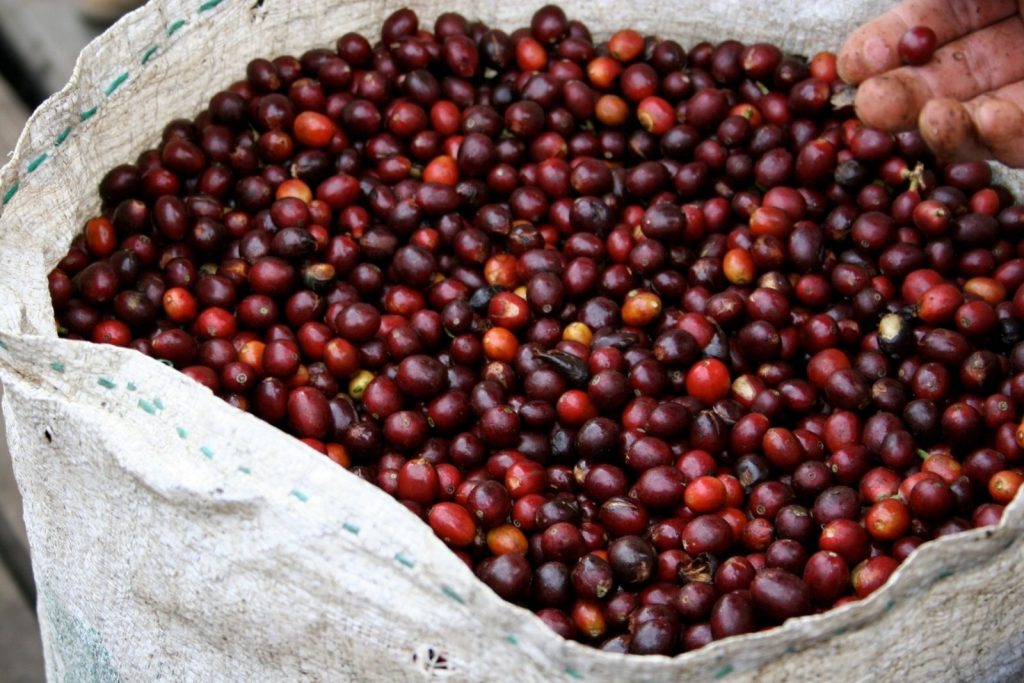
Attitude
Nestled at an elevation of 500m-600m above sea level, the Central Highlands of Vietnam boast rich red basalt soil and a cool, rainy climate—perfect conditions for cultivating exquisite Robusta coffee for centuries. This region’s beans are famed for their potent caffeine content, bold flavors, and low acidity, enticing coffee aficionados worldwide.
Yet, the allure of Central Highlands coffee lies in its unique regional nuances. Some beans enchant with silky notes of butter, oil, or caramel, while others capture the essence of the sun-kissed highlands and crisp mountain breezes. Discover the captivating tastes that have made Central Highlands coffee a cherished treasure for generations.
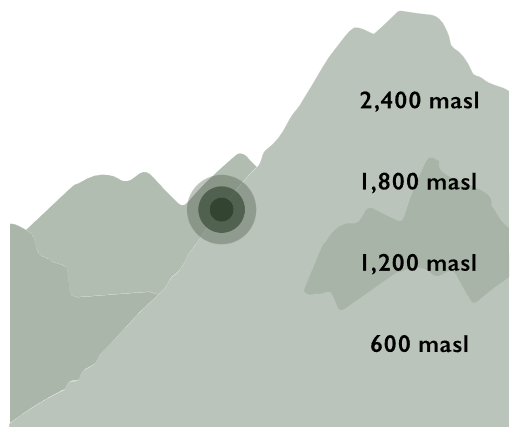
Environment
Climate factors such as precipitation, temperature, and humidity play a crucial role in shaping a coffee’s maturation, overall flavor, and quality. Coffee-producing countries either boast naturally ideal conditions for growth or employ innovative techniques to enhance their ecosystems.
Robusta coffee, in particular, thrives in a harmonious dance with its environment, flourishing under the tender care of nature’s elements. As you indulge in its rich, bold flavors, you’ll savor the exquisite results of this intricate interplay.
Precipitation
500m – 800m
Temperature
17℃
Humidity
71%
Processing
Coffee processing involves separating the bean from the cherry, with popular methods like washed, dry, and honey, among others. Each technique emphasizes different aspects to create unique flavors, inviting you to explore and savor the diverse world of coffee.
Washed
Fully Washed
Dried
Sun-dried
Natural
Fully Washed
Timeline
Harvest and export times are based off when a particular coffee will be at its peak quality. Cherries picked at the start of the harvest season tend to be underdeveloped, and those picked at the end are often overdeveloped, so producers aim for that sweet
Harvest
Export
Dec – Sept
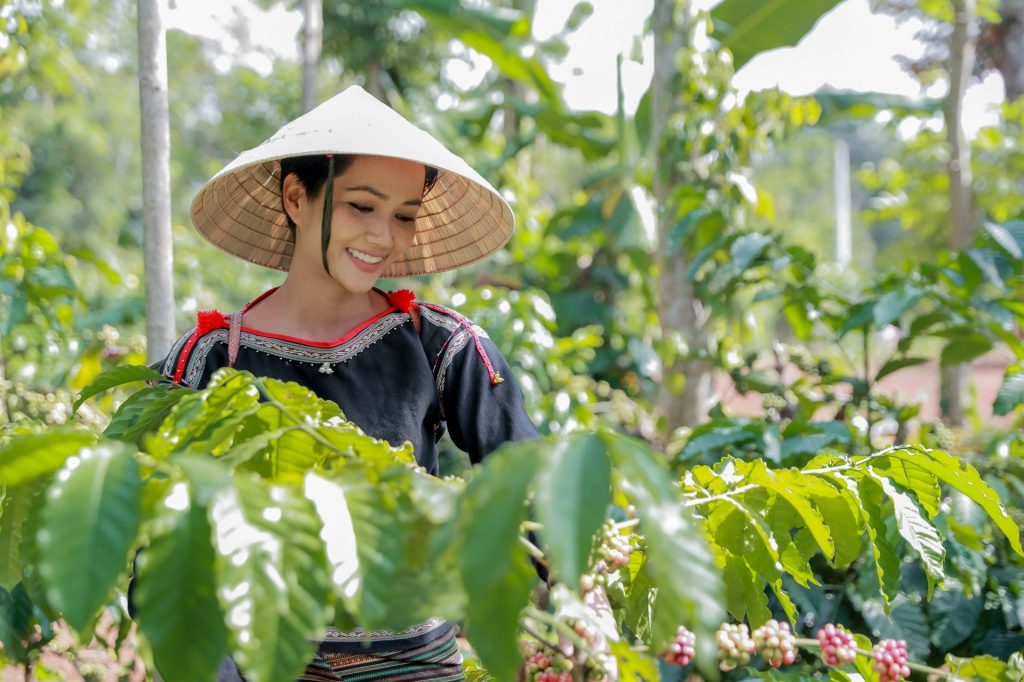
Dak Lak Viet Nam
Dak Lak Province, nestled in Vietnam’s Central Highlands, earns its title as the “capital” of Vietnamese coffee with its sprawling green coffee fields cascading across the region’s basaltic hills, bathed in sunlight and caressed by gentle winds. Home to numerous distinguished coffee brands, Dak Lak’s exceptional beans have captured hearts worldwide, with exports reaching over 80 countries and territories, solidifying its global reputation for exceptional coffee.
